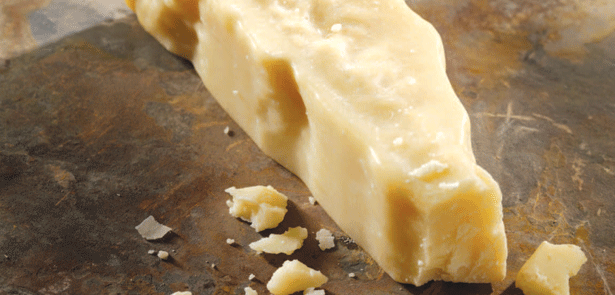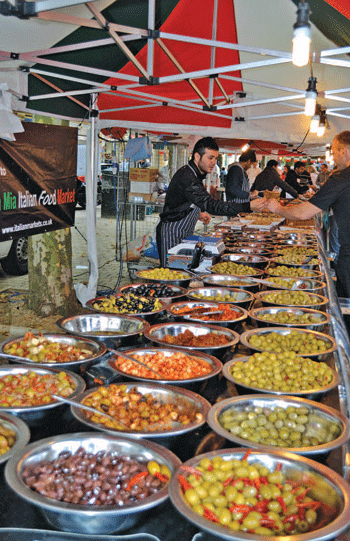The Big Cheese

This September, the Italian Festival returns with an array of fabulous ingredients to tantalise our tastebuds. To get in the mood, Toby Venables investigates one with which he is slightly obsessed: parmesan
Years ago, I was mocked by a housemate for using parmesan to make that classic comfort  food, macaroni cheese. What on earth was I doing, he seemed to be saying, using an Italian cheese in what is a traditional English dish..? I defended of my culinary choice with extreme prejudice. If I wanted to put parmesan in it – and I really, really did – nothing and no one was going to stop me. (In fact, I was using parmesan and good English cheddar – two of the world’s greatest cheeses, which together make the world’s greatest cheese sauce.)
food, macaroni cheese. What on earth was I doing, he seemed to be saying, using an Italian cheese in what is a traditional English dish..? I defended of my culinary choice with extreme prejudice. If I wanted to put parmesan in it – and I really, really did – nothing and no one was going to stop me. (In fact, I was using parmesan and good English cheddar – two of the world’s greatest cheeses, which together make the world’s greatest cheese sauce.)
Of course, that housemate – a fellow foodie – was merely trying to wind me up (it worked). But it seems a pasta and cheese dish called “macarouns” existed in England as far back as the 14th century. Whether this was an import from Italy is not known, but one thing is clear – by the 17th and 18th centuries it was being made with parmesan (one recipe from 1769 combines it with cheddar – good choice!). Those outside of the Italian community may think of fresh parmesan, in blocks or slabs, as a relatively recent arrival – the thing that thankfully broke the stranglehold of those little fish-food tubs of cheesy sawdust that one found on tables of middle-class English homes throughout the 1970s, where “Italian food” meant “spaghetti bolognese”, and the results were sometimes good, sometimes bad, but, more often than not, pretty ugly. In fact, we’ve been importing and scoffing the stuff for centuries. This was an expensive commodity, however – so much so, that when Samuel Pepys fled London in 1666 ahead of the advancing Great Fire, with severe limitations on what he could carry, he buried his “parmezan” in the garden alongside his best wines so it would survive the conflagration.
These days, we have things a little easier. Parmesan still isn’t cheap, but think of it as an investment. You can get a good-sized chunk for less than the cost of a steak, it’ll last for a good many meals, and can transform cheaper ingredients into something magical. If all you have in the house is some decent pasta, good olive oil and a piece of parmesan, you have the makings of a meal.
Don’t just bring it out for the pasta, either – try it grated onto steamed asparagus, on poached eggs, sprinkled over baking fennel with a drizzle of cream, or simply make it part of the cheese board.
Stalls at the Italian Festival offer ample opportunity to try and to buy, along with hundreds of other delights. Don’t hold back.
What is this thing called umami?
OK, I admit it. I am a parmesan junkie. I get parmesan pangs like others get cravings for bacon or chocolate (although actually, I get those too). Waiters in restaurants get nervous when they’re grating the stuff on my plate of pasta, waiting for me to tell them to stop – because, essentially, I never will. I’d eat it any time, day or night, and actively search for excuses.
So what is it that gives parmesan that “craving” factor? Parmesan – Parmigiano-Reggiano, to give it its proper Italian name – is a hard cheese with an intense, savoury, salty flavour. But there’s far more going on than those words suggest. Get your nose up close to a slice of the real stuff and you might even think it smells fruity (the heart of a parmesan cheese can have distinct notes of pineapple). You may also notice that is has small white flecks in it. These are not simply salt, but parmesan’s secret weapon – umami.
For a long time, it was believed there were four basic tastes that we responded to: sweet, sour, salt, bitter. Then, in 1908, a Japanese chemist named Kikunae Ikeda proposed a fifth – a powerful savoury taste which he called umami. It wasn’t until the 1980s that this began to be accepted in the West – but what also emerged was that parmesan has it by the bucketload. In the face of this, resistance is futile.
It’s worth noting that there are a couple of other Italian hard cheeses occasionally referred to as “parmesan”: Grana Padano is pretty close to Parmigiano-Reggiano in style; creamiertasting Pecorino, made from ewe’s milk, rather less so, but is traditionally favoured in some parts of Italy for grating over pasta dishes. Recommending Pecorino over Parmigiano-Reggiano became a brief craze amongst TV chefs a couple of years ago. To my mind, it’s not as complex or interesting – but try it. It’s all a matter of taste, and of what you feel is right for the dish.
Vegetarian or not vegetarian?
The fact is, if you’re looking for vegetarian parmesan, forget it. It simply doesn’t exist. Like wine, the genuine product comes only from designated areas (primarily provinces in Emilia-Romagna) and is manufactured according to regulations which demand strict adherence to traditional methods – and those methods involve the use of calf rennet. For some time, this fact was overlooked, even by top chefs. Recently, Raymond Blanc had to apologise for including parmesan in dishes labelled as vegetarian on his restaurant menu. Hugh Fearnley-Whittingstall also came under fire for using the cheese in his vegetarian recipe book (amended in the new edition). Full awareness of this fact probably has yet to filter out to many restaurants, so if a dish on a menu says it contains parmesan and has a ‘V’ next to it, either it isn’t vegetarian, or it isn’t really parmesan.
Fortunately, there are some good vegetarian alternatives available. As with many wines, stuff made just outside the designated area or using essentially the same method can approach the original in quality. One great example is – believe it or not – Sainsbury’s Basics Italian Hard Cheese, which is available in a familiar triangular slab, manages to capture most of the qualities of the genuine article (without the use of rennet) and at a far lower price.
Peterborough Italian Festival
Saturday 21 September and Sunday 22 September
Peterborough, various venues
Peterborough’s Italian Festival is back! Food, music, wine, Vespas, food, Lambrettas, food… This year’s highlights include special guest Gennaro Contaldo – a renowned Italian chef who previously worked with Antonio Carluccio at his Neal Street restaurant in London, and once mentored a young man named Jamie Oliver.
















